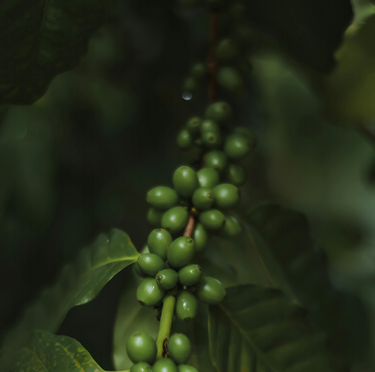Coffee is an incredibly complex beverage, with over 1,000 unique chemical compounds found in a single cup contributing to its rich, diverse flavours. As coffee lovers, we often use descriptive terms like "fruity," "floral," or "chocolatey" when tasting and describing our favourite morning brews. But what do these coffee tasting notes actually mean?
In this complete guide to coffee tasting notes, we’ll uncover the fascinating science behind how factors like origin, processing method, roasting technique and brewing style impact the tastes and aromas found in your cup.
Read on to learn how to better identify, describe and appreciate the multitude of flavours locked inside every batch of coffee beans.
Table of Contents
- What Defines Flavour Notes in Coffee?
- What Flavours Can You Taste in Coffee?
- What Causes Different Flavour Profiles in Coffee Beans?
- Major Players That Shape a Coffee’s Flavour Profile
- Common Flavour Descriptors Used by Professional Coffee Tasters
- How to Discover Flavours and Improve Your Coffee Tasting Ability
- Tasting Beyond Flavour Notes to Fully Appreciate Coffee
What Defines Flavour Notes in Coffee?
Flavour notes in coffee refer to the specific aromas and tastes that professional coffee cuppers and tasters identify when systematically tasting and analysing coffee, formally known as "cupping." These descriptive terms allow coffee drinkers to name the complex array of flavours identifiable in a well-prepared cup of coffee.
When we drink coffee, our taste buds and olfactory senses work together to create the overall perception of flavour. Without getting overly scientific, the smells and chemical compounds released during brewing interact with receptors in our nose and mouth, triggering memories and descriptions our brain translates into recognisable flavours and sensations.
For example, an acidic, fruity coffee may spark thoughts of fresh strawberries or citrus due to similarities among certain organic compounds. An earthy, herbal coffee might elicit comparisons to pine or ripe tomatoes. By identifying different flavours, aromas and textures during a structured coffee cupping, we build a "flavour vocabulary" to articulate the coffee tastes and unlock a deeper appreciation of this favourite beverage.
What Flavours Can You Taste in Coffee?
The range of flavours found in specialty coffee is astounding. Coffee can exhibit virtually any aroma or taste perceivable by the human senses. Sour, sweet, savoury, fermented — coffee contains a vast array of chemical compounds that activate olfactory receptors and taste perceptions.
However, there are several broad categories commonly used to describe most coffee flavour profiles:
- Fruit and Florals: This includes red fruit notes like berry, cherry and stone fruit as well as orange, lemon and other bright citrus. Floral notes like jasmine and honeysuckle are also common. Fruit and floral notes tend to be most noticeable in natural and honey coffee processing methods. Light and medium coffee roasts typically retain more of their fruity, flowery origins.
- Nuts and Spices: The nutty category covers almond, peanut and hazelnut notes, often found in beans grown at elevations above 4,000 feet. Spice elements include clove, cacao and tones of pepper. You’ll frequently find nutty or spiced flavours when cupping South and Central American coffee varieties.
- Chocolates and Caramels: From intense, baker's chocolate notes to subtle, creamy milk chocolate tones, coffee quite literally bursts with chocolate and caramel tastes. These indulgent flavour notes emerge during darker roasts, especially with beans sourced from regions like Brazil and Sumatra, making them the perfect coffee gift for someone you love.
Beyond these broad groups several other specific flavours appear routinely. These span brown sugar, coconut, vanilla and honey through earthy, herbal categories like tobacco and leather. The diversity of perceivable coffee notes is virtually endless. Two people might taste the exact same coffee and one may sense red apple while the other describes more of a berry jam note — and they could both be accurate!
What Causes Different Flavour Profiles in Coffee Beans?
We all know coffee comes from beans inside bright red coffee cherries harvested from flowering coffee plants. Yet a single sip of a stellar homemade latte can spark thoughts of blueberries, chocolate fudge or freshly cut grass. Where exactly do these flavour notes come from and what causes such drastic differences among coffees?
As touched on above, there are over 1,000 unique chemical compounds found in roasted coffee beans that interact to produce subtle (and sometimes not-so-subtle) flavours. Everything from the variety of coffee plant and genetics of the seeds to environmental factors like soil conditions, altitude and humidity impact how these compounds develop during cultivation. Additional influences like processing method, home roasting, and brewing technique further alter the chemical structure of beans to bring out new flavours.
Here’s a quick overview of the major players that shape a coffee’s flavour profile from crop to cup:
- Coffee Varietals & Growing Conditions: There are hundreds of cultivars used for coffee agriculture, each with their own inherent flavours and qualities. Plus, weather patterns, sunlight exposure, soil chemistry and other environmental cues prompt chemical changes in the actual coffee fruit that will later influence taste. These nature and nurture elements provide the blank canvas that determines capability for certain flavours.
- Processing Methods: How raw coffee beans are handled post-harvest - through methods like natural, honey, pulped natural and washed processing - directly impacts moisture content, acidity, sweetness and overall flavour. For example, the dried fruit pulp left intact during natural processing lends itself to fruity, fermented flavours vs the clean, crisp profile of wet-processed coffees.
- Roast Profile: Here is where personal preference comes into play. From light roasts that retain much of coffee’s intrinsic character to darker styles where bolder, roast-dominant flavours emerge, subtle tweaks in the roasting process elicit some of the biggest flavour transformations. Even minute temperature or time adjustments mid-roast can amplify or mute certain tastes.
- Brew Method & Recipe: The last piece of the equation is how beans are extracted during beverage preparation. Brewing via espresso, pour over, French press or another method draws out different elements, as do factors like coffee-to-water ratio and water chemistry itself. Brewed correctly to optimise flavour, amazing cups can be elevated further still through choices on serving style like adding warm milk for lattes or cold for iced coffee.
Together, these interconnected and nuanced impacts from farm to mug work together to create the flavour experiences we enjoy. Even subtle environmental shifts or tiny brew adjustments completely change a coffee’s flavour profile from one harvest to the next. This sensory diversity is a big part of what makes our third-favourite beverage so dynamic.
Common Flavour Descriptors Used by Professional Coffee Tasters
If you spend any time perusing high-end coffee bags you’ll notice the tasting notes sound more akin to sampling fine wines than describing dark roasted pick-me-ups. Terms like “zesty,” “silky,” “luscious” and “bright” abound on coffee packaging from leading roasters and top coffee brands.
Truth is, your taste buds may never detect half the nuanced flavours outlined by professional coffee reviewers - and that is perfectly fine. Focus instead on what you do perceive without getting hung up chasing hyper-specific tastes.
How to Discover Flavours and Improve Your Coffee Tasting Ability
If coffee mainly tastes like “hot brown morning juice” to you so far, don’t fret! Tasting individual flavours and aromas in such a complex drink is a learned skill. By focusing your senses and trying different preparation styles you’ll gradually pick up more subtle tastes with ongoing exposure and exploration.
And documenting what you experience along the way using a coffee tasting journal helps cement gains in flavour perception.
Follow this basic methodology when learning how to systematically taste coffee:
- Observe It: First closely examine and describe the coffee’s appearance in the cup. Note properties like surface sheen, clarity and colour of liquids. Also observe any bubbles or foam structure. Visually scanning coffee this way focuses awareness even before the first sip.
- Inhale Deeply: Next breathe deeply with your nose directly above the brew to pull in and concentrate aromas. As you smell, attach descriptors like “winey,” “tobaccoey” or “grassy” to any perceptible scents. Use your full aromatic vocabulary to name distinct smells.
- Slurp It: Now comes tasting - but don’t just sip. Instead, loudly slurp each sample across your palate from front to back, agitating the liquid to volatilize compounds for aroma and fully coating your tongue to hit all taste regions.
- Feel & Describe It: As you slurp and swallow, focus intently on mouthfeel and aftertaste. Define overall texture terms like “silky,” “astringent” or “bright.” Call out individual flavour notes, especially any that emerge after swallowing like chocolates. And broadly categorise the coffee’s profile using descriptions like “balanced,” “complex” or “winey.”
- Compare & Contrast: When tasting multiple coffees, thoroughly rinse your palate with neutral water between each to avoid muddled carryover flavours. And directly contrast and compare their aroma, acidity, sweetness and other dimensions while the experience remains fresh.
With practice distinguishing tastes using this systematic approach to coffee cupping, your flavour clarity and descriptive ability will grow in leaps and bounds. You’ll certainly perceive at least a handful of distinct flavours beyond “strong” and eventually detect qualities uttered by the most snooty of professional coffee raters.
Tasting Beyond Flavour Notes to Fully Appreciate Coffee
Whilst highlighting tasting notes makes for splashy coffee labelling, at the end of the day flavour is just one component of the overall drinking experience. Overfocusing on catching every last descriptor can actually detract from enjoying your daily cup of joe.
Beyond flavour, factors like the ritual of preparation, mood enhancement perks and caffeine kick all influence coffee satisfaction too. Not to mention the ethics, sustainability and backstory behind the beans, which impact how consumers perceive taste.
At Rave Coffee, we carry an array of specialty beans with flavour notes spanning berry fruit tones to dark chocolate and everything between. Peruse to find your next favourite daily drinker based on tasting descriptions. And don’t stress over picking up every subtle nuance listed – instead focus on the holistic experience of great-tasting coffee crafted just the way you like it.
Now that you understand the basics, dive deeper into our Complete Guide to Cupping Coffee or browse flavour-forward bean recommendations in our online coffee shop catalogue. And as always, contact our head coffee taster at Rave or visit any local cafe to have your most pressing brew questions answered by passionate coffee experts.






